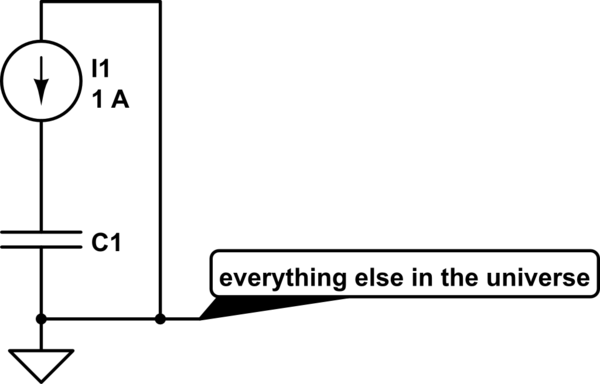
simulate this circuit – Schematic created using CircuitLab
What will be the voltage between nodes A & B?
My guess is that the voltage between nodes A & B should be increasing forever as the current source,I will keep on pumping charges to node A & due to increasing charge voltage will keep on rising.
Am I right?If not why?
Will the answer remain same if there's a voltage source at the terminal of current source,other than A?
Thanks for reading a question as silly as this.
If someone can suggest a source(book,site etc) where more such questions may be found,that would be great.




